AD 41 (XLI) was a common year starting on Sunday of the Julian calendar. At the time, it was known as the Year of the Consulship of C. Caesar Augustus Germanicus and Cn. Sentius Saturninus. The denomination AD 41 for this year has been used since the early medieval period, when the Anno Domini calendar era became the prevalent method in Europe for naming years.

An equestrian statue is a statue of a rider mounted on a horse, from the Latin "eques", meaning "knight", deriving from "equus", meaning "horse". A statue of a riderless horse is strictly an "equine statue". A full-sized equestrian statue is a difficult and expensive object for any culture to produce, and figures have typically been portraits of rulers or, more recently, military commanders.

The Friesian is a horse breed originating in Friesland, in the Netherlands. Although the conformation of the breed resembles that of a light draught horse, Friesians are graceful and nimble for their size. It is believed that during the Middle Ages, ancestors of Friesian horses were in great demand as war horses throughout continental Europe. Through the Early Middle Ages and High Middle Ages, their size enabled them to carry a knight in armour. In the Late Middle Ages, heavier, draught type animals were needed. Though the breed nearly became extinct on more than one occasion, the modern day Friesian horse is growing in numbers and popularity, used both in harness and under saddle. Most recently, the breed is being introduced to the field of dressage.
The FEI World Equestrian Games are the major international championships for equestrianism, and are administered by the Fédération Equestre Internationale (FEI). The games have been held every four years, halfway between sets of consecutive Summer Olympic Games, since 1990. Prior to that year, all ten of the FEI's individual disciplines held separate championships, usually in separate countries. The modern WEG runs over two weeks and, like the Olympics, the location rotates to different parts of the world. Riders and horses competing at WEG go through a rigorous selection process, and each participating country sends teams that have distinguished themselves through competition as the nation's best in each respective discipline. At the 2010 Games, 57 countries were represented by 800 people and their horses.
David John O'Connor is a retired equestrian who represented the United States in the sport of three-day eventing. He competed in two Olympic Games, winning a team silver at the 1996 Summer Olympics and an individual gold and team bronze at the 2000 Summer Olympics. At the 1999 Pan American Games, O'Connor took an individual silver and team gold and at the 2002 World Equestrian Games he assisted the US team to gold. After his retirement from competition in 2004, he became involved in the administrative side of international eventing. O'Connor has held top coaching roles for the US and Canadian national eventing teams, and was president of the United States Equestrian Federation from 2004 to 2012. During his career, O'Connor and his horses were awarded many honors, including equestrian and horse of the year awards from several organizations. In 2009, he was inducted to the United States Eventing Association's Hall of Fame, and two of his horses have been granted the same honor. O'Connor is married to fellow international event rider Karen O'Connor, and the pair operate two equestrian training facilities in the eastern United States.

The destrier is the best-known war horse of the medieval era. It carried knights in battles, tournaments, and jousts. It was described by contemporary sources as the Great Horse, due to its significance.
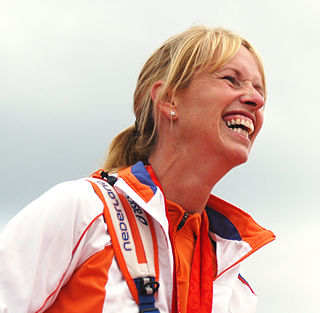
Theodora Elisabeth Gerarda "Anky" van Grunsven is a Dutch dressage champion who is the only rider to record three successive Olympic wins in the same event. Along with her Olympic successes, she has won numerous medals at the World Equestrian Games (WEG), and is the only rider to have competed at every WEG since they began in 1990. Between 1990 and 2006, she competed at the Games in dressage, but in 2010 she was named as part of the Dutch reining team, marking a major change in discipline.

A bridle path, also bridleway, equestrian trail, horse riding path, ride, bridle road, or horse trail, is a path, trail or a thoroughfare that is used by people riding on horses. Trails originally created for use by horses often now serve a wider range of users, including equestrians, hikers, and cyclists. Such paths are either impassable for motorized vehicles, or vehicles are banned. The laws relating to allowable uses vary from country to country.

The first use of horses in warfare occurred over 5,000 years ago. The earliest evidence of horses ridden in warfare dates from Eurasia between 4000 and 3000 BC. A Sumerian illustration of warfare from 2500 BC depicts some type of equine pulling wagons. By 1600 BC, improved harness and chariot designs made chariot warfare common throughout the Ancient Near East, and the earliest written training manual for war horses was a guide for training chariot horses written about 1350 BC. As formal cavalry tactics replaced the chariot, so did new training methods, and by 360 BC, the Greek cavalry officer Xenophon had written an extensive treatise on horsemanship. The effectiveness of horses in battle was also revolutionized by improvements in technology, including the invention of the saddle, the stirrup, and later, the horse collar.
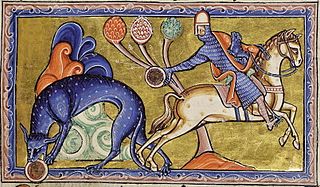
A courser is a swift and strong horse, frequently used during the Middle Ages as a warhorse. It was ridden by knights and men-at-arms.
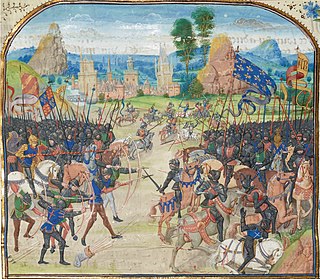
The term rouncey was used during the Middle Ages to refer to an ordinary, all-purpose horse. They were used for riding, but could also be trained for war. It was not unknown for them to be used as pack horses.
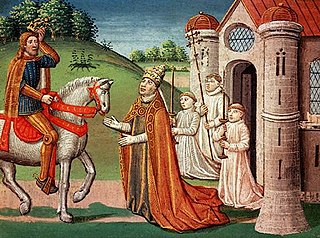
Horses in the Middle Ages differed in size, build and breed from the modern horse, and were, on average, smaller. They were also more central to society than their modern counterparts, being essential for war, agriculture, and transport.
Michael Charles Prestwich OBE is an English historian, specialising on the history of medieval England, in particular the reign of Edward I. He is retired, having been Professor of History at Durham University, and Head of the Department of History until 2007.
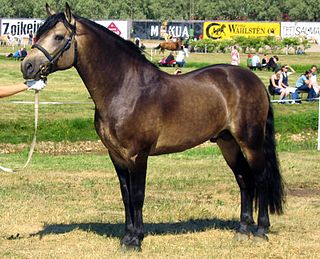
The Irish Hobby is an extinct breed of horse developed in Ireland prior to the 13th century. The breed provided foundation bloodlines for several modern horse breeds, including breeds as diverse as the Connemara pony and the Irish Draught. Palfreys were known as haubini in France, which eventually became hobbeye. These animals eventually found their way to Ireland where the Irish Hobby developed.
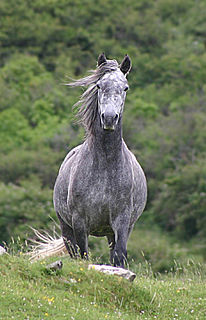
Hobelars were a type of light cavalry, or mounted infantry, used in Western Europe during the Middle Ages for skirmishing. They originated in 13th century Ireland, and generally rode hobbies, a type of light and agile horse.

Sir Henry de Bohun was an English knight, the grandson of Humphrey de Bohun, 2nd Earl of Hereford. He was killed on the first day of the Battle of Bannockburn by Robert the Bruce. Riding in the vanguard of heavy cavalry, de Bohun caught sight of the Scottish king who was mounted on a small palfrey (ane gay palfray Li till and joly) armed only with a battle-axe. De Bohun lowered his lance and charged, but Bruce stood his ground. At the last moment Bruce manoeuvred his mount nimbly to one side, stood up in his stirrups and hit de Bohun so hard with his axe that he split his helmet and head in two. Despite the great risk the King had taken, he merely expressed regret that he had broken the shaft of his favourite axe.
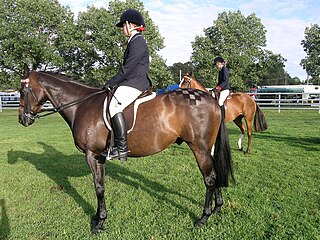
Hack within the activity of equestrianism commonly refers to one of two things: as a verb, it describes the act of riding a horse for light exercise, and as a noun, it is a type of horse used for riding out at ordinary speeds over roads and trails. The term is sometimes used to describe certain types of exhibition or horse show classes where quality and good manners of the horse are particularly important.

Chovgan or Chovken, is a sporting team game with horses. It was considered an aristocratic game and held in a separate field, on specially trained horses. Nowadays, chovgan is played in Azerbaijan, Iran, Tajikistan and Uzbekistan.

Denny Emerson is an American equestrian. He is the only equestrian to have won both an international gold medal in eventing and a Tevis Cup buckle in endurance. In 1972, Emerson was named United States Eventing Association's Rider of the Year. He was a member of the United States Three Day Eventing Team that won the gold medal at the 1974 Eventing World Championships. As of 2015, Emerson operates as a clinician and trainer. He is a regular contributor to The Chronicle of the Horse's "Between Rounds" column. He and his wife, May Emerson, run Tamarack Hill Farms in Strafford, Vermont and Southern Pines, North Carolina.


















